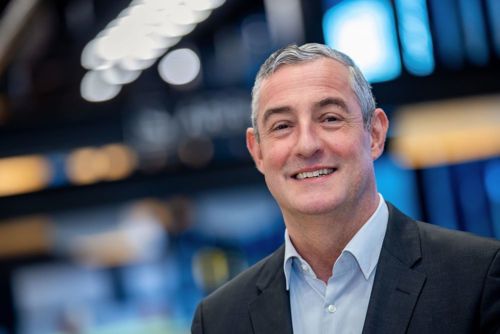
Picture credit: Maastricht Aachen Airport
The €35 million runway upgrade – part of an up to €100 million infrastructure investment plan for the airport – involves extending the operational length to 2,750 metres by 2025. Currently it stands at 2,500 metres.
MAA, the second largest cargo airport in the Netherlands, serves as the European hub for Turkish Cargo and for Middle Eastern carriers, including Emirates SkyCargo, Qatar Airways Cargo, SAUDIA, and Royal Jordanian.
With the new extended runway it is hoped that it will open up new business opportunities for MAA.
“We are able to enlarge our playing ground because we can now accommodate North American and African carriers,” said Jos Roeven, CEO of MAA, who worked at Swissport for 14 years and was during his last year operationally and commercially responsible for 32 cargo stations across Europe.
While the airport is mainly set up for Middle Eastern carriers bringing goods to the Far East, it also provides many holiday flights during the summer period for seasoned players such as Corendon Airlines and Ryanair.
While the impact of the runway closure of MAA was necessary and deemed “as a once in a 20-year event” to carry out essential maintenance, it was dramatic as it shut down the airport’s only runway and in the meantime staff at the airport was asked to transition to work with Schiphol airport’s handling agents to assist with their cargo and passengers operation.
“Our employees already started working at Schiphol three months ago and has been a good lesson for them to learn how to work at a larger airport. Altogether we sent around 35 employees to Schiphol,” says Roeven.
Closer cooperation between both airports makes commercial sense, following Royal Schiphol Group’s (RSG) announcement on 8 June to acquire a 40% interest in MAA for €4.2m. The province of Limburg is keeping a 60% stake.
Schiphol already has a majority share in Eindhoven Airport and operates and owns other regional airports in the Netherlands like Rotterdam The Hague and Lelystad.
The collaboration between Schiphol and MAA will also mean cross-sharing of knowledge and key developments in innovations and even electric flights, especially in the area of cargo handling.
“The Royal Schiphol Group, which has shares in airports nationally and internationally, is trying to create a ‘one airport system’ where we all support the main hub at Schiphol but the hub looks after the smaller regional airports. This benefits us two-fold as we will be able to collaborate and share knowledge in house, which will be useful in the future when you consider tech and AI developments in motion,” says Roeven.
As MAA is a self-handling airport, it brings numerous benefits to its global clients, removing any red tape compared to what happens with other ground handlers.
“In principle, I would always like my customers to have a choice. On the other hand, when I talk to all my customers they really see how we operate as a strength. Since we are the airport and the handler – everything is all in one place – there are shorter lines of communication so people can find out information more quickly about fuel uplift, shipments, or an aircraft’s parked location,” he says.
He explains one of the advantages of being in the south of Holland is that it has very good labour ethics and credits his staff for making a difference to operations.
“We see at other airports where there are global players and sometimes there’s a race to the bottom going on. People do not have enough volume and go very low with the price which is destroying the market. We don’t have that dynamic and actually our customers appreciate us for that,” he says.

Navigating through Covid-19
Maastricht Aachen saw many other stations collapse during the pandemic while it experienced ‘three fantastic years of Covid’ due to its busy cargo operations, as well as adding staff to the books rather than letting people go.
“From a business continuity point of view we were the stars of Europe in that period,” says Roeven.
“This is predominantly because we are mainly a cargo airport; we lost all of our passenger traffic but cargo performed extremely well so that is the advantage of having our passenger and cargo operations in one place and being able to cross utilise our staff. People who were loading the bellies of the 737s were now working on the ramp for cargo freighters. It’s good to see when passenger traffic is down that we can still run a profitable business. We hope it will work the other way too if there is a big decline in cargo but an uplift in passenger travel,” he said.
On the current global airfreight market, which has seen rates dip considerably, Roeven says: “It’s hard for everyone as the widebody passenger capacity is growing more; more widebodies are flying at the same time and the demand is going down. Demand is very low so everyone is fighting for the same kilo, but hopefully in the fourth quarter we will see an improvement.”
On building a sustainable business, he adds: “We have a very clear business plan until 2040. We will definitely make the transition towards sustainable aviation to be net zero with our ground operations by 2030 and make our buildings more sustainable.”
This article was published in the June issue of Air Logistics International, click here to read the digital edition and click here to subscribe.
